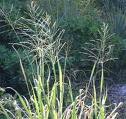The size of a silo is dependent on the number of animals to be fed, the quantity of silage fed to each animal per day, the length of the dry season and quantity of available plant material.
As a rough guide silage made in small scale silos is approximately 500kg/cm3. If a trench silo is 2 meters wide and 1.2 meters high, and assuming that a cow requires 40 kg of silage per day and forage maize yields 25 ton DM/Ha and silo losses at 15% of the original material ensiled then the length of silo will be as follows:
| No of animals | Length of dry season (days) | Silo length (m) | Area of crop maize (Ha) |
| 2 | 90 | 8.5 | 0.9 |
| 2 | 120 | 11.3 | 1.1 |
| 4 | 90 | 17 | 1.71 |
| 4 | 120 | 22.6 | 2.3 |
| 6 | 90 | 22.6 | 2.5 |
| 6 | 120 | 34 | 3.4 |
The role of microorganism in silage making is directly related to the production of the following acids - lactic acid, acetic acid, propionic acid and butyric acid. Lactic acid is the most important of the four. If formed rapidly and sufficient quantity preserves the ensiled plant material therefore no decay. Lactobacilli occur in large amounts in green plants. Their development in the ensiled material depends on the presence of large quantities of sugar in the plant material. Crop plants like maize which have large carbohydrate content are easier to ensile than legume plants with low carbohydrate content because of the presence of high levels of lactobacilli..
Other acids are formed during the ensiling process but are not desirable. If green fodder used as ensiling material have very high moisture content the silage formed have high acetic acid and therefore unpalatable. If butyric acid forms in silage the result is unpleasant smell and silage in unpalatable. Presence of butyric acid is an indication that silage has undergone undesirable fermentation.
Hay is air dried plant material stored to be fed to livestock during dry season. Hay can either be grasses, legumes, fodder or crop residues. The age of cutting determines the quality of hay. Young plants have high protein content but low energy content. The best time to cut grasses is at the time of inflorescence. If cutting is delayed the quality of hay will be poorer.
The crop is cut and left in the field to dry up for baling at a later date. Nutrient losses are caused by respiration which can go up to 10% therefore drying should be as fast as possible. Other losses are due to:
The quality of hay will depend on the plant species and the period the hay is baled. High quality hay has 25 – 30% fibre content and 12 – 18% protein content. The dry matter (DM) yield increases with the age of the plant material but quality decreases with increasing age.
A reasonable balance between quality and quantity can be achieved by cutting the crop when it has produced a good yield of DM but before quality has declined. For grasses the best time to cut for hay is during the heading stage and for legumes at 15% flowering. And for a mixture of grasses and legumes cutting is best at booting stage of grass.
Bahia grass (paspalum notatum) is a perennial deep rooted grass that spread by very vigorous rhizomes. It usually form dense sward within a short time of establishment. It is of low palatability and resistant to grazing.
The grass is large seeded therefore can do in rough seedbed. Seeding rate is about 5 – 10 kg/ha. It can also be established from stem cuttings and can be grazed 3 months after initial establishment.

It is only excellent in slopy or very steep areas where there is high rainfall. Soils should be moderate to highly fertile. The grass can withstand considerable periods of drought because of the rhizomes.
Guinea grass (panicum maximum) is a perennial tufted grass with long creeping bases and deep roots which enable it survive long periods of drought. The stems have many nodes. It can grow to a height of 3m when mature. The grass can be stemmy and coarse under bad management.

The grass dies quickly if put under continuous grazing. But it is also highly palatable and very nutritious.
The grass is a poor seeder and establishes very slowly whenever seeds are used. Fast establishment is therefore through use of splits on small areas. It is tolerant to shades and drought but sensitive to frost and poorly drained soils. It is adaptable to a wide range of soil conditions.
The grass is suited to warm humid conditions and requires plenty of rain (at least 875mm). It responds well to fertilizer application.
In Kenya the grass is utilized in especially wet areas although the grass can survive in dry areas if under very good management.
Dry matter (DM) production is about 10 ton/ha/yr if harvesting is done at intervals of 8 – 10 weeks. The grass is a poor seeder. Seeding rate at 2.5kg/ha and seeds must be sown only on a well prepared seedbed in a depth of less than 7mm.
Page 5 of 8